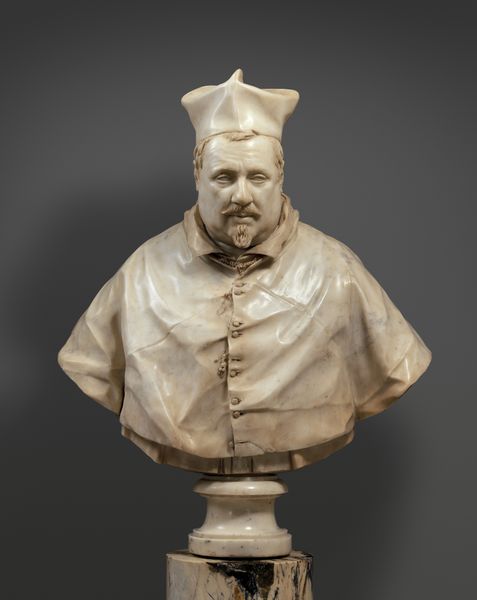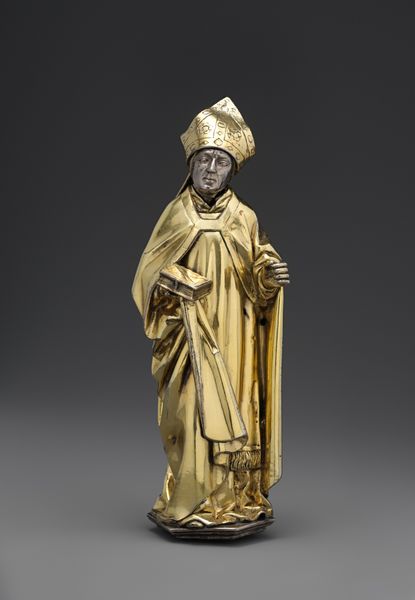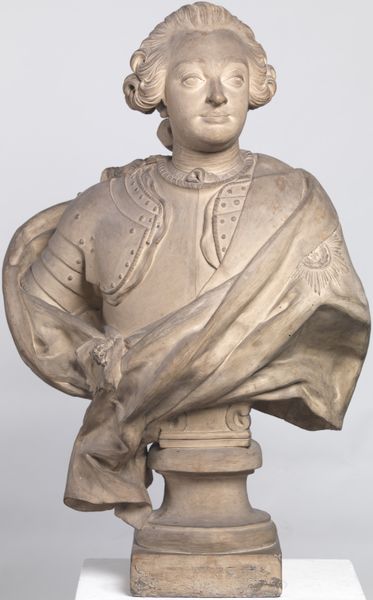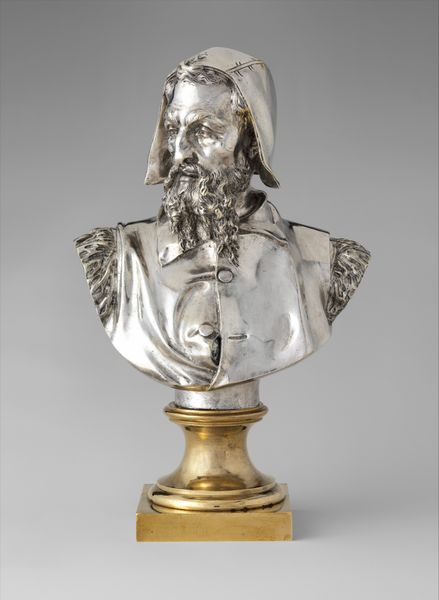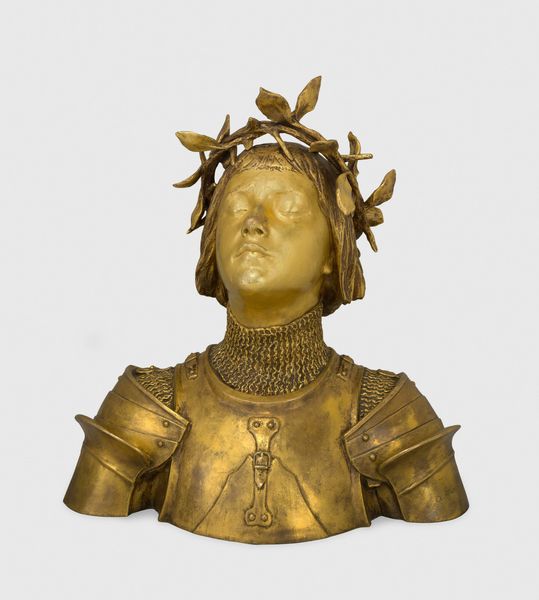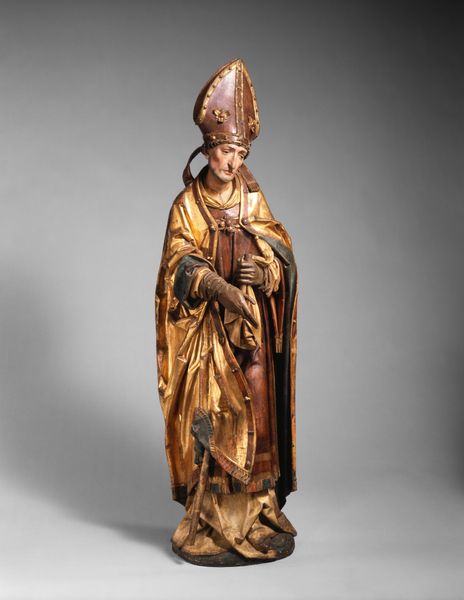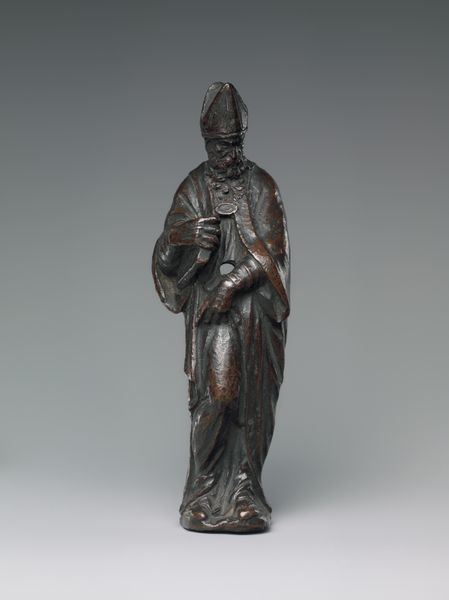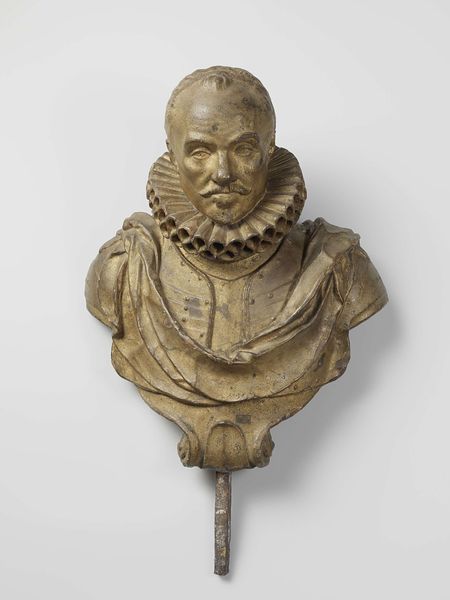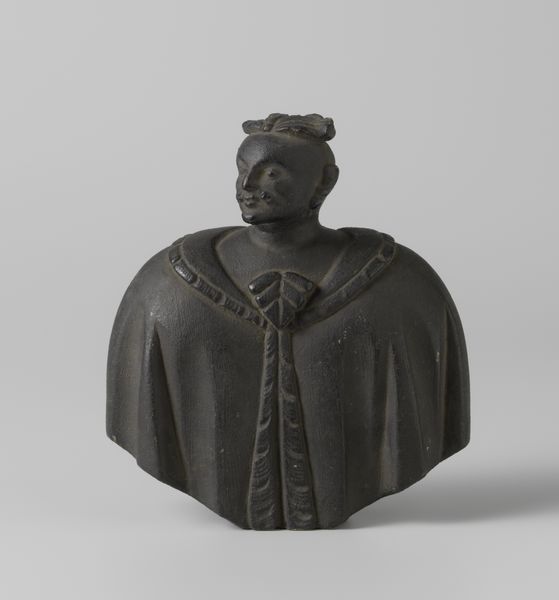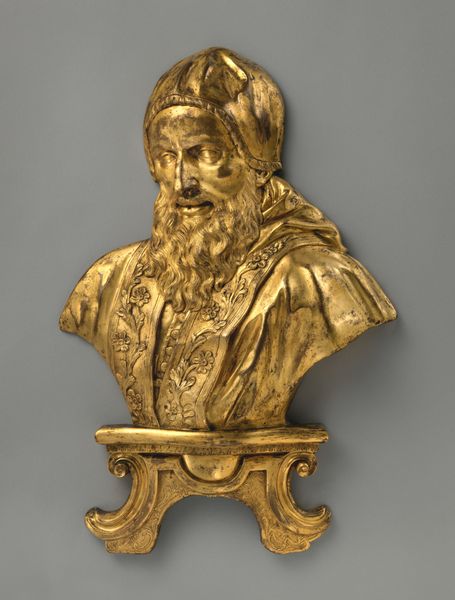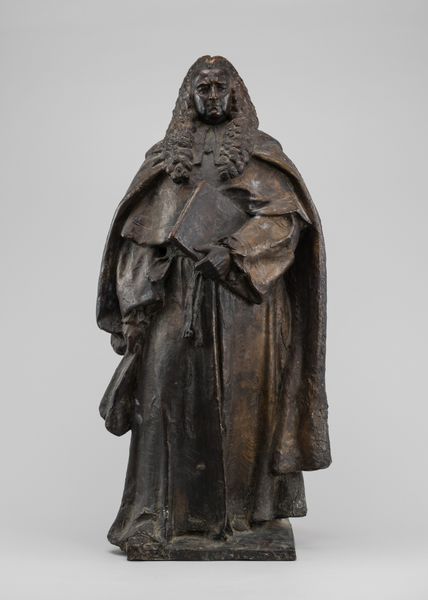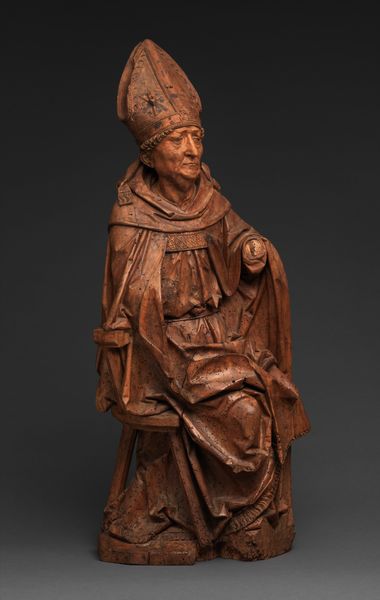
silver, metal, sculpture
#
portrait
#
medieval
#
silver
#
metal
#
sculpture
#
gothic
#
sculptural image
#
sculpture
Dimensions: height 45.2 cm, height 26.5 cm, width 24.2 cm, depth 17.5 cm
Copyright: Rijks Museum: Open Domain
Elias Scerpswert, born in 1330, made this silver bust of Saint Frederick. The image of a saint, especially in bust form, makes visible the power of the church and the importance of religious figures in medieval society. The mitre, the distinctive hat worn by bishops, signifies Frederick’s high rank within the Catholic Church. Its precious material indicates his importance and veneration. In the medieval period, the church played a dominant role in shaping cultural values, dictating moral codes, and influencing political events. Religious artworks like this would have reinforced these messages, promoting the authority of the church and inspiring faith among believers. The display of this bust in a church or private collection would have served as a reminder of Saint Frederick's virtues, and the religious institution he stood for. Understanding the social and institutional context helps us see how art functioned within specific historical moments. Research into the history of the Catholic Church, the life of Saint Frederick, and the patronage system of the time, can deepen our appreciation of this artwork.
Comments
rijksmuseum about 2 years ago
⋮
This bust once contained part of the skull of Frederick, Bishop of Utrecht. After his murder in 838, he was canonized and his skull was venerated as an important relic. The silversmith Scerpswert made this precious container for the skull, shaping it like a portrait bust of the bishop. On Christian feast days, the faithful could worship this devotional object.
Join the conversation
Join millions of artists and users on Artera today and experience the ultimate creative platform.
